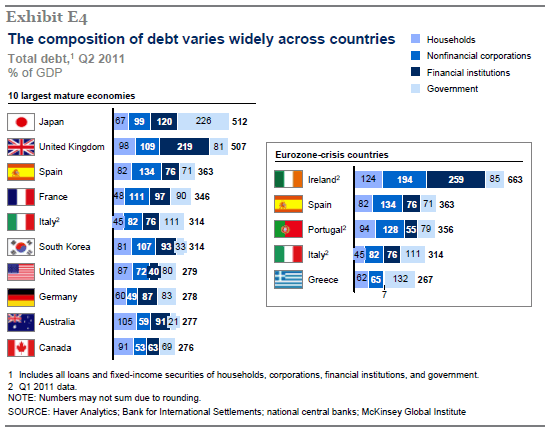
Today, the AFR and the Age present two similar interpretations of Australia’s debt conundrum.
As noted by Houses & Holes, Professor Warwick McKibbin claims in the AFR that Australia’s rising stock of public debt could become a problem to the extent that it is spent on programs that do not provide a return beyond the cost of borrowing. He then argues that Government spending should instead be targeted at well-targeted infrastructure, whose debt would effectively become self-liquidating by the extra productivity it creates.
A similar interpretation is presented today in the Age, which quotes NAB chief, Cameron Clyne, and Bank of America-Merrill Lynch chief economist, Saul Eslake, who criticise the ‘public debt is bad’ mantra that seems to dominate Australian politics and argue for increased investment in productivity enhancing infrastructure:
”Australia has a debt problem: we don’t have enough,” Mr Clyne said on Thursday.
”If we continue to have the debate that suggests that all debt is bad, and not a debate on the productive use of debt, we will simply not be able to fund the infrastructure this economy needs to thrive into the future’…’
”Most investors around the world are up to their eyeballs in northern-hemisphere government paper. We have a unique window, as a AAA nation, with strong demand for AAA debt, to issue that debt and divert it to productive infrastructure.”
Bank of America Merrill Lynch chief economist Saul Eslake said he had sympathy with that view.
”One of the more sensible ways of seeking to reduce the risk of recession when the mining investment boom starts to wind down in a couple of years’ time would be for the government to do precisely that,” he said.
”We could borrow up to 3 to 4 percentage points of GDP without imperilling our AAA rating, as long as it was for rigorously evaluated and well-targeted infrastructure spending.”
You will obviously get no arguments from us on whether Australia should borrow to invest in productivity enhancing infrastructure. As argued a dozen or so times this year, we believe increasing investment in well-targeted infrastructure is a clear antidote to the unwinding of the mining investment boom, offering the double dividend of supporting growth and jobs as mining capital expenditures fade, whilst also setting Australia up for the long-term via improved productivity and living standards.
That said, there remains a vulnerability that virtually nobody on either side of politics, the mainstream media, or the mainstream economics profession will acknowledge – one that is far more pervasive than concerns about public debt: Australia’s heavy private debt load. As shown by the below chart from McKinsey Global, while Australia’s public debt levels are low, our household debt is amongst the highest in the developed world, with most of that invested in pre-existing housing:

As we all know, the vast majority of this private debt is in mortgages on homes already built, which are hardly productive, so if Mr Clyne would like to have a frank “debate” he should begin with these facts.
Such a debate would quickly expose the irony of Mr Clyne cavalier expression. As ratings agencies continue to point out, Mr Clyne’s bank enjoys a two-notch upgrade to its credit rating because of the implicit guarantee provided by a strong budget. They have also stated openly that to retain its AAA rating Australia must run surpluses “across the cycle”. This does not mean no more debt but it does place an inherent limitation on what deficits are possible.

